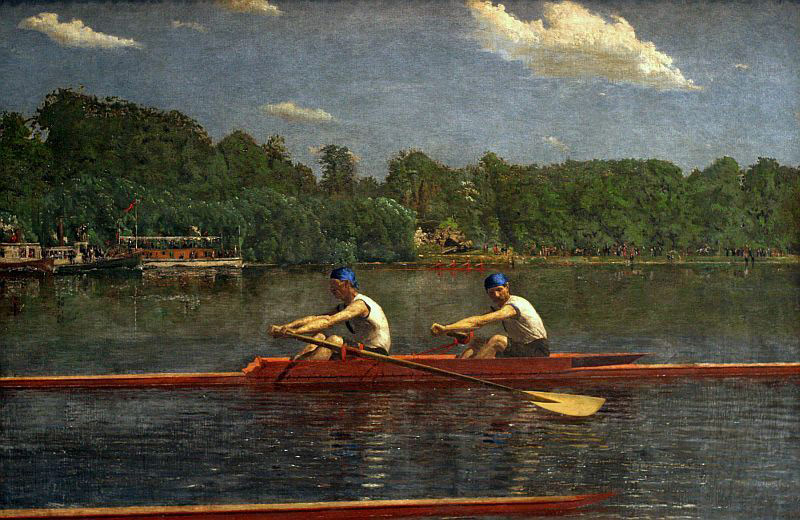|
Commentary : |
In the decade following the Civil War, rowing
became one of
America’s most popular spectator sports. When its champions,
the Biglin brothers of New York, visited Philadelphia in the
early 1870s, Thomas Eakins made numerous paintings and
drawings of them and other racers.
Here, the bank of the Schuylkill River divides the composition
in two. The boatmen and the entering prow of a competing
craft fill the lower half with their immediate, large-scale
presence. The upper and distant half contains a four-man rowing
crew, crowds on the shore, and spectators following in flagdecked
steamboats.
Himself an amateur oarsman and a friend of the
Biglins,
Eakins portrays John with his blade still feathered, almost at
the end of his return motion. Barney, a split-second ahead in
his stroke, watches for his younger brother’s oar to bite the
water. Both ends of the Biglins’ pair-oared boat project beyond
the picture’s edges, generating a sense of urgency, as does the
other prow jutting suddenly into view.
The precision of Eakins’ style reflects his
upbringing as the
son of a teacher of penmanship. He studied under academic
artists in Paris and traveled in Europe from 1866 to 1870. To further
his understanding of anatomy, Eakins participated in dissections
at Philadelphia's Jefferson Medical College in 1872-1874.
|
|
